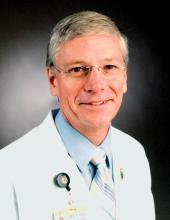“I don’t know.”
That’s what family physician Michael L. LeFevre tells patients who ask him if they should be screened for vitamin D levels or if they could benefit from vitamin D supplementation.
“We can say that vitamin D is related to health, but we’re really not sure what the optimal blood level is for good health, ” he said at a public conference on vitamin D sponsored by the National Institutes of Health.
“If I have a limited amount of time and a limited capacity to engage in shared decision making with my patients, and my patient is a good candidate for a statin, I’m going to talk about statins long before I’m going to talk about vitamin D. That’s a no-brainer,” explained Dr. LeFevre of the department of family and community medicine at the University of Missouri–Columbia.
He was one of many speakers over the course of the day-and-a-half-long meeting who acknowledged the lack of evidence for prescribing vitamin D for ailments ranging from depression to nonspecific pain.
At this point, there are three decisions about vitamin D that a primary care physician has to make, Dr. LeFevre said.
First, “do I choose to either bring up screening or bring up supplementation for the general population that I’m seeing one on one, in the relatively small window of time I have to address preventive services with my patients?” asked Dr. LeFevre, who also chairs the U.S. Preventive Services Task Force. “Does vitamin D rise to that level?”
Second, “if my patients ask me if they should have their vitamin D level checked or if they should be taking vitamin D supplements, what can I tell them at this point?”
Finally, “when my patients present with nonspecific symptoms such as fatigue, weakness, pain without specific pathology, or a clinical picture such as depression or fibromyalgia, is there a role for me to check their vitamin D level – and then, at a particular threshold, prescribe vitamin D to make them feel better?”
That’s the vitamin D conundrum facing today’s primary care physicians. “I facetiously teach my residents that if something good happens in medicine, take credit for it, even if you had absolutely no influence over the outcome,” Dr. LeFevre said. “If I give somebody vitamin D and they feel better, they think I’m a great doctor, even if that had nothing to do with whether their pain improved.”
For now, unknowns about vitamin D are plentiful, Dr. LeFevre cautioned.
“What’s different about people who have a vitamin D level of 40 ng/mL from those with a vitamin D level of 20 ng/mL?” he asked.
“Is it just what they’re eating? Is it how much time they’re spending in the sun? Are there other things? Can we really be sure that giving them a drug (vitamin D) and getting their level up, either with a fixed-dose approach or a treat-to-target approach [will help]? Do they get better? Do they feel better? Do they avoid feeling worse later on? Do they have fewer fractures? Do they die of fewer heart attacks?” he asked.
“We need those studies to be sure that what we’re doing is good,” Dr. LeFevre noted.
Another speaker, Dr. Bess Dawson-Hughes, called for research efforts to better understand the role of 25-hydroxyvitamin D, and she highlighted the need for standardized vitamin D assays.
“We don’t really know what we can promise or expect from supplements with a lot of the chronic diseases that are being ‘treated’ with vitamin D today,” added Dr. Dawson-Hughes, who directs the bone metabolism laboratory at the Tufts University U.S. Department of Agriculture Human Nutrition Research Center on Aging. “It’s created an expensive and excessive [practice of] measuring and treating.”
Dr. LeFevre and Dr. Dawson-Hughes reported having no relevant financial disclosures.
On Twitter @dougbrunk


